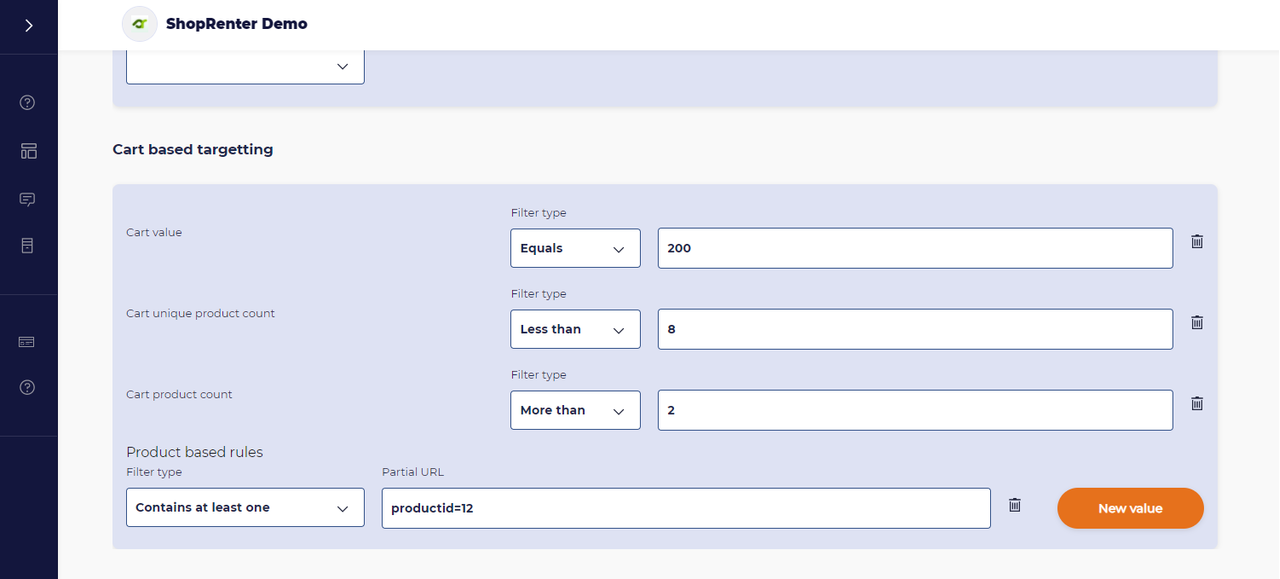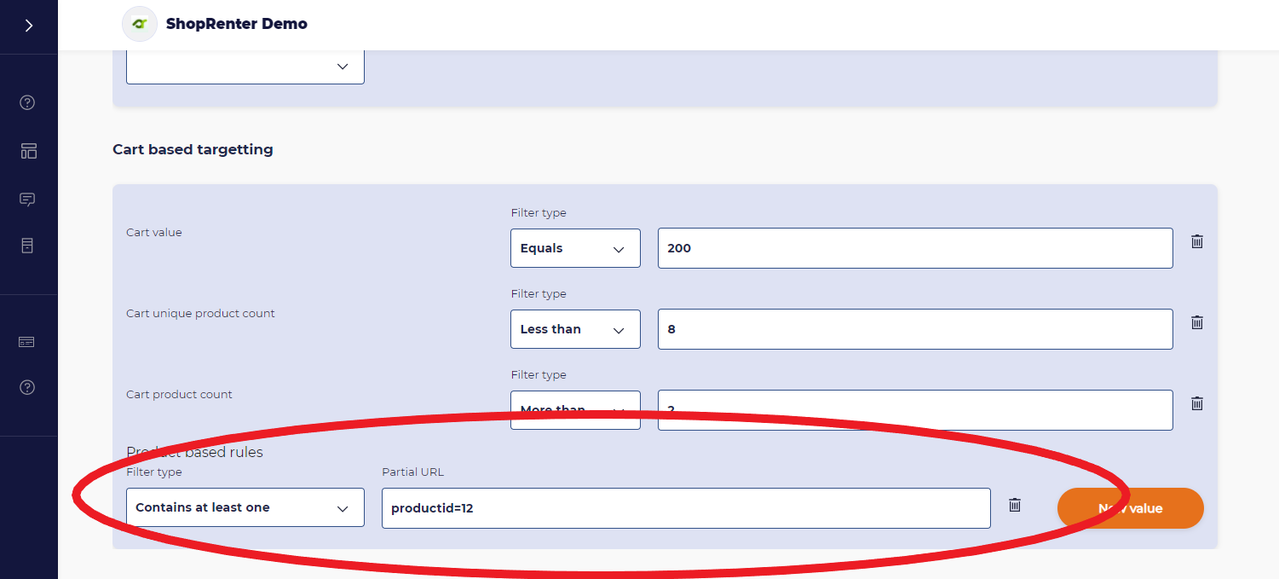FAQ
ConvKit offers an opportunity to increase the cart value or to run product-based promotions efficiently with its vart value specified targeting widgets and settings. It makes it possible to target precisely the visitors who have already put one or more products into their cart.
You can set your widgets based on four targeting rules:
based on the sum price of the cart
based on the individual number of the products in the cart
based on the sum of the products in the cart
based on the URLs of the products that are already in the cart
You must consider, that in the case of the webshops that are not sharing all the cart information on their pages, this targeting type will have limited features. If you have any questions or if you would like to know, if your webshop is ready to have cart-based targeting values, please contact us at support@convkit.com.
Targeting by cart values
This might be the most popular targeting type among ConvKit users. It can be used perfectly for example in the case of free delivery, coupon promotions that are based on a price limit, or other services. If you would like to target based on the cart values, you only need to add the value and define the valuation.
The following valuations can be used: equals, less then, less then or equals, more than, more than or equals
Targeting by individual product numbers
It can be used for cross-sell promotions for example, when you want to target based on the individual products (SKUs) in the cart. It can be easily teamed up with product-based rules. Just set the number of individual products and the valuation.
The following valuations can be used: equals, less then, less then or equals, more than, more than, or equals
Targeting by the sum of products in the cart
It can be used for cross-sell promotions for example, when you want to target based on the sum of the products in the cart. In this case, ConvKit will consider the quantity of the products that are in the cart. It can be easily teamed up with product-based rules. Just set the number of individual products and the valuation.
The following valuations can be used: equals, less then, less then or equals, more than, more than, or equals
Targeting by the URLs of the products in the cart
If you would like to target your widget based on specific products, manufacturers, or categories, URL-based rules will do the trick for you. You can add the valuation, which the system will apply to your campaign and the widget will only show if it belongs to it. It can be perfectly used to cross and up-sell promotions, or to offer brand or service-based promotions.
The following rules can be used:
equals
not equals
contains at least one
contains all items
does not contain at least one item
does not contain any item
Equals
In this case, ConvKit will only show the widget to the visitors who are adding one of the products' URLs added to this list. It is important, that in this case, the whole URL must be exactly the same. An example of this is when we target visitors that are adding specific products to their cart.
Not equals
In this case, ConvKit will only show this widget to the visitors who are adding products to the cart that are NOT on this list. It is important, that in this case, the whole URL must be exactly the same. A good example is when we target visitors that are adding specific products to their cart.
Contains at least one
In this case, the widget will be shown to the visitors who have products in the cart that has at least one of the items that are added to this list. If you are not sure what is the exact URL that you are targeting, it is safer to use this option, to be sure that the widget will definitely be shown to your target audience. A good example is when you would like to target the cart items from a specific manufacturer, for this to work, this data should be shown in the product URL.
Contains all items
In this case, the widget will only be shown to the audience, when it contains all the URLs that you have added to this list. A good example is when you would like to target the products of a manufacturer and categories for this to work, this data should be shown in the product URL.
Does not contain at least one item
In this case, ConvKit will only show this widget to the visitors who are adding products to the cart that are NOT on this list. A good example is when we would like to exclude a manufacturer and a category for this to work, this data should be shown in the product URL.
Does not contain any item
In this case, ConvKit will only show this widget to the visitors who are adding products to the cart that are NOT on this list. A good example is when we would like to exclude a manufacturer and a category for this to work, this data should be shown in the product URL.







